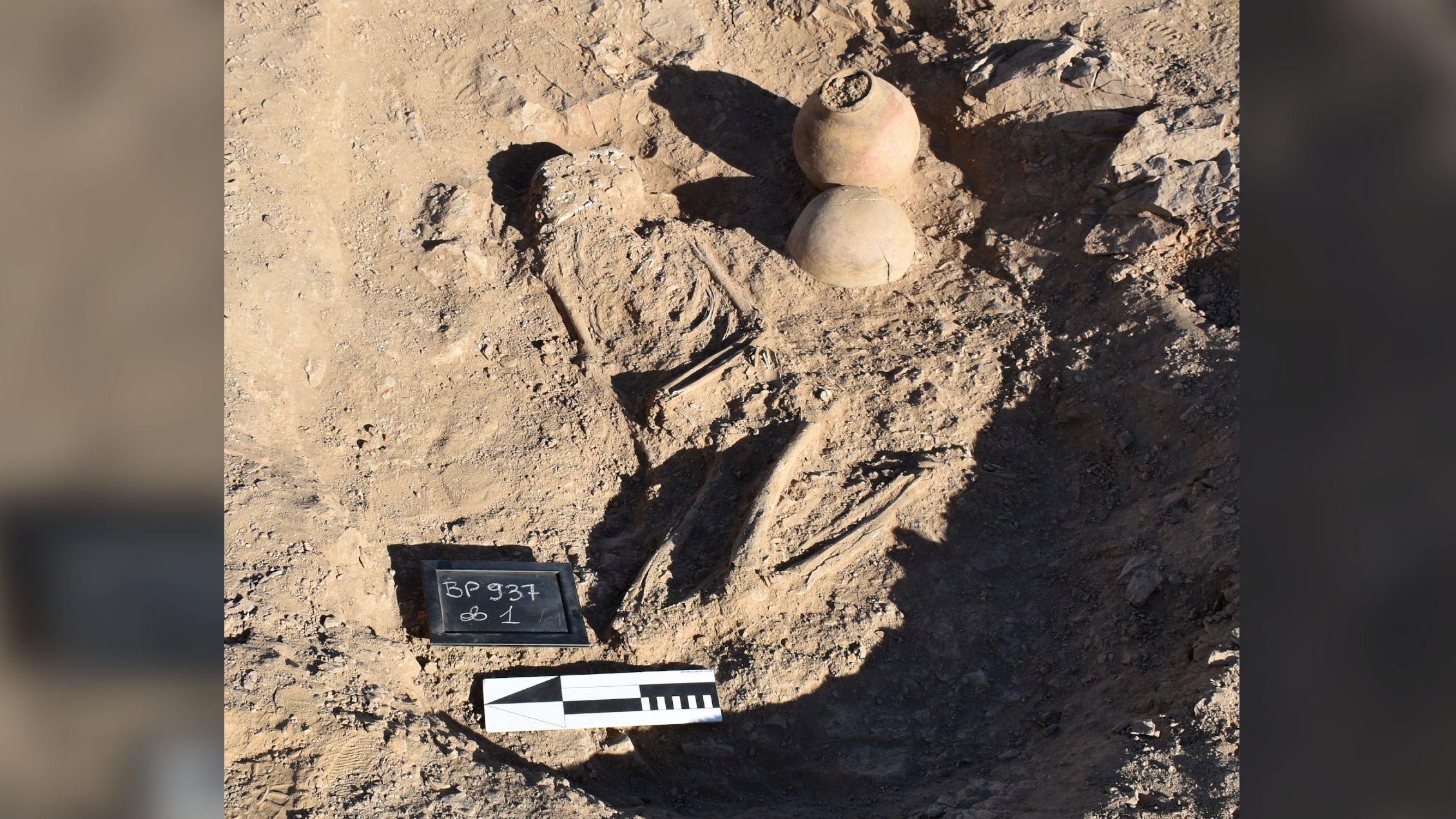Diagnostic dilemma: A rare genetic disease stained a woman's heart black
An older woman had a relatively common heart problem, but it had a very rare cause.

The patient: A 65-year-old woman in Austria
The symptoms: The patient had been experiencing shortness of breath during physical activity for several weeks when she went to a hospital for evaluation. She also had a history of passing unusually dark urine, which had been happening since childhood, and in her 40s, she'd had total hip and knee replacements on both sides due to arthritis.
What happened next: The woman's doctors checked her heart function with an echocardiogram, which uses ultrasound to visualize blood flow through the heart's valves and chambers. They also used cardiac catheterization, which involves guiding a long, thin tube through the blood vessels and into the heart to further examine its valves and look for blockages and narrowed arteries.
The diagnosis: The evaluations revealed that the woman had severe aortic stenosis, in which the heart's aortic valve is narrowed or blocked. This valve normally opens to allow oxygen-rich blood to flow from the heart to the rest of the body, so stenosis hinders that crucial blood flow.
The treatment: The patient underwent open heart surgery to have her aortic valve replaced. Thirteen days later, she was discharged from the hospital. In a report of the case, one of the woman's doctors noted that, three years after the surgery, the patient remained free of cardiovascular symptoms.
What makes the case unique: Common risk factors for aortic stenosis include having high cholesterol, high blood pressure or a history of smoking. The condition often coincides with coronary artery disease, which is characterized by plaque buildup in one or more of the arteries that supply blood to the heart. In this patient's case, the coronary arteries appeared normal, but doctors discovered something unusual during her open heart surgery: "black pigmentation" and calcified "dark black" tissues in her aorta and aortic valve, respectively.
The tissue removed during the surgery was further examined under a microscope. This examination revealed "brown pigment deposition" within hardened areas of the aortic valve and in some of the noncalcified tissues in the structure. Within the hardened valve tissue, the team also found signs of chronic inflammation, including the presence of "pigment-laden" immune cells. There was also degeneration within the connective tissues of the valve.
Get the world’s most fascinating discoveries delivered straight to your inbox.
Based on these findings, as well as the patient's medical history, the doctors determined that she had a rare genetic condition called alkaptonuria. Globally, the inherited disease is thought to affect 1 in 250,000 to 1 in 100,000 people, although the prevalence varies widely among countries.
Alkaptonuria is caused by mutations in a gene called HGD, which carries instructions for an enzyme that helps break down two protein building blocks in the body: phenylalanine and tyrosine. These mutations make the enzyme less effective, which causes a buildup of a byproduct of phenylalanine and tyrosine. The byproduct, homogentisic acid, is excreted in urine, which causes pee to darken when it's exposed to air. And in people with alkaptonuria, there's too much homogentisic acid for the body to excrete, so the substance builds up in connective tissues.
The accumulating acid becomes an "ochronotic pigment," which essentially stains the tissues where it accumulates and eventually calcifies, or hardens. Many people with alkaptonuria require joint replacements because their joints have calcified, and in some people, this calcification also affects the heart. This was the case for the 65-year-old woman.
"It is difficult to assess the incidence of cardiac ochronosis accurately because of its rarity," the case report author noted. "Cardiac ochronosis is a very rare disease, but cardiac surgeons and pathologists should be aware of this condition since they might be confronted with the typical signs during elective cardiac surgery and histological examination of excised specimens."
This article is for informational purposes only and is not meant to offer medical advice.

Nicoletta Lanese is the health channel editor at Live Science and was previously a news editor and staff writer at the site. She holds a graduate certificate in science communication from UC Santa Cruz and degrees in neuroscience and dance from the University of Florida. Her work has appeared in The Scientist, Science News, the Mercury News, Mongabay and Stanford Medicine Magazine, among other outlets. Based in NYC, she also remains heavily involved in dance and performs in local choreographers' work.
You must confirm your public display name before commenting
Please logout and then login again, you will then be prompted to enter your display name.
